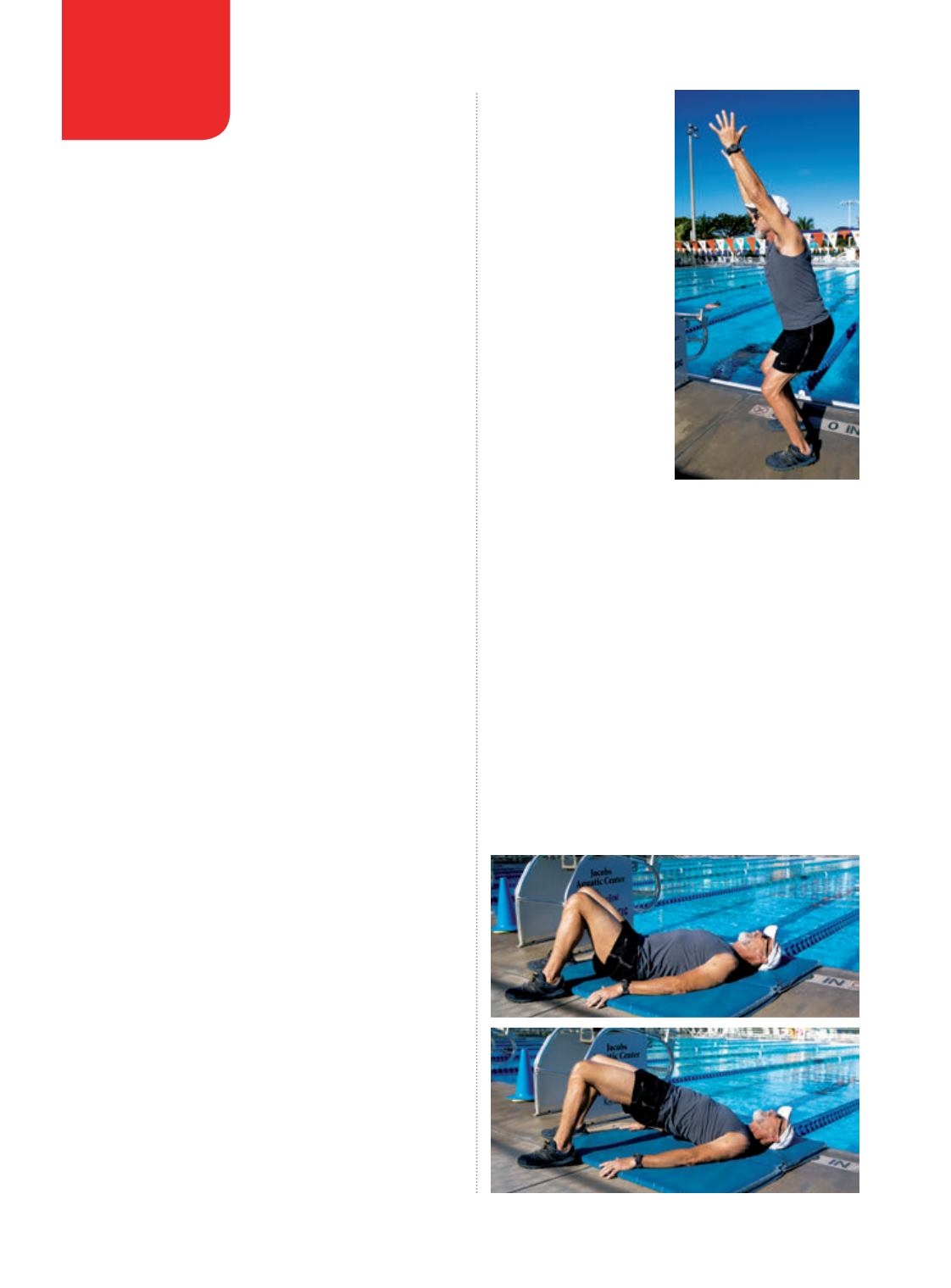

The
DAN
Guide to Healthier Diving
36
|
WINTER 2017
DIVE
FITNESS
C
ore stability is vital for sports, activities of
daily living, functional independence as we
age and, you guessed it, scuba diving. So
what do fitness gurus and your friends at
the gymmean when they refer to the core?
They are talking about the musculature that surrounds the
stomach: the abdominals, obliques and lower back.
Core strength has a host of benefits. A stronger
midsection allows you to approach the physical
challenges of scuba diving and other weight-bearing
activities with more force. It enables the body to better
withstand the jarring external forces that are common
on a rocking boat. A strong core means increased
stability for balance and transitional movements such
as maneuvering on land in scuba gear. Finally, and
perhaps most important, a strong core reduces risk of
injury. Many people work out their arms and legs, but
a weak link in the center of your body increases the
likelihood that an injury will take place there. A weak
or inactive core is a common cause of lower-back pain.
Out of the water, core stability is important for gear
setup and transport, moving around on a rocking boat
and simply standing from a seated position to embark
on a journey through the deep. A strong midsection
allows your body to safely and effectively oppose these
external forces without suffering debilitating effects.
In the underwater realm, your core takes on a whole
new level of importance. The core muscles serve as the
foundation upon which movement occurs. The abs
stabilize the pelvis to allow us divers to propel ourselves
through the water. Strong abdominals are essential to
efficient finning. Weak abdominals lead to lower-back pain.
Now we’ll dive into some of the best core exercises
specifically for underwater adventurers. Most people,
when thinking of core exercises, go right to sit-ups. But
there are many ways to strengthen your core without
doing a single sit-up.
CHAIR POSE
1. Start standing with your
feet shoulder width
apart and parallel.
2. Once your feet are
positioned, stop
looking at them,
and stand with good
posture.
3. Sit back, shifting your
weight onto your heels
while raising your arms.
4. Focus your eyes forward
or slightly downward.
5. Raise your arms,
reaching your fingers
toward the sky.
6. Draw in your belly
button, continuing to breathe while holding it. (This is
one of the most important aspects of the movement.)
7. Begin holding for 5 seconds, and work up to 30 seconds.
8. Repeat five times.
Tips:
1. Relax your neck.
2. Keep your chest up and your eyes down.
3. Keep breathing.
Challenge:
Try to slide your feet closer together.
BRIDGES
1. Begin by laying on your back with your knees bent
and your fleet flat on the floor.
2. Flatten your lower back to the floor.
By Jessica B. Adams, Ph.D.,
and Matthew DelTufo, D.P.T.
Photos by Stephen Frink
NO SIT-UPS,
NO PROBLEM


















